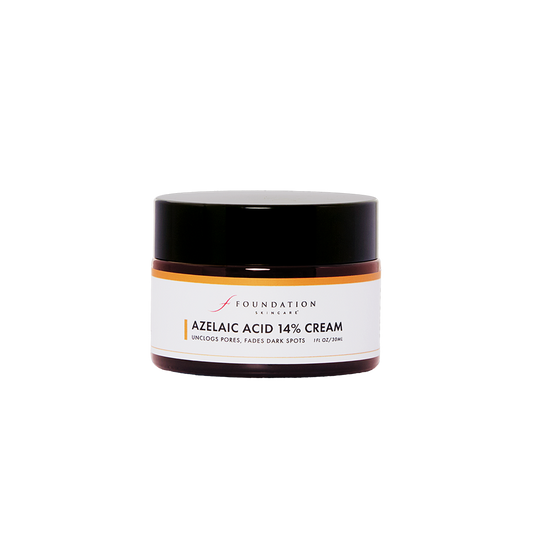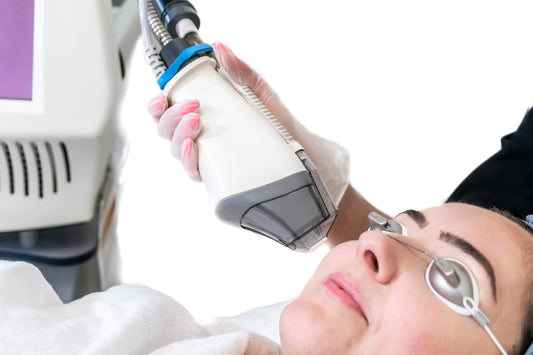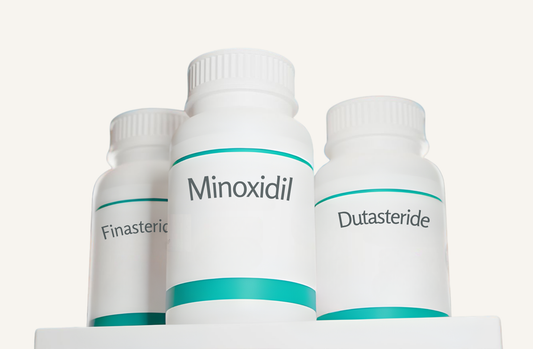Despite how common it is, melasma is often misunderstood. Few people understand exactly what may be contributing to their melasma, and even fewer know how to treat it. This guide includes everything you need to know about the causes and symptoms of this condition, as well as the best treatments for melasma.
What is Melasma?
Melasma is a common skin disorder that causes an increase in epidermal and/or dermal based pigmentation – AKA discolored patches and spots that are darker than your natural skin tone. It most frequently affects the forehead, cheeks, and cheekbones, but can also sometimes occur on the arms. Melasma affects far more women than men, likely due to the role that estrogen and progesterone play in the disorder.
It’s important to note that melasma in itself is not harmful. However, some people feel self-conscious about the discoloration, and may wish to use treatment(s) to lighten the appearance.
Main Causes of Melasma
There are a few primary causes of melasma, with sun exposure being one of the top culprits.1 This is because UV rays affect melanocytes, which are the cells that control pigment in the skin. The condition is generally considered untreatable in patients who don’t protect their skin from the sun on a regular basis.
Melasma can also worsen with hormonal shifts and treatments. This means those taking birth control pills or hormone replacement therapy may be more at risk of experiencing melasma.2
Melasma During Pregnancy
This condition is often referred to as the “mask of pregnancy,” since it so often affects pregnant women.3 Melasma in pregnancy is caused by hormonal changes, just like how women on birth control can experience melasma. Pregnancy-related melasma tends to have a better prognosis of fading after the pregnancy. On the other hand, birth control-induced melasma does not tend to fade on its own after stopping contraception.
Melasma Treatment Recommendations
If you want to know how to treat melasma on the face, these are some of the most effective methods for both tackling current discoloration and preventing future melasma.
Sun Protection
Since UV exposure worsens melasma, proper sun protection is absolutely essential for preventing future melasma and stopping current discoloration from becoming more prominent. Photo protection with a physical-based sunscreen is essential. Look for formulas containing zinc oxide, titanium oxide, and iron oxide. Your sunscreen should have an SPF of at least 40, although formulas with SPF 50 and above are ideal. Remember to reapply throughout the day to properly shield your skin against UV rays.
Azelaic Acid 14% Cream
• Brightens skin, fades brown spots
• Unclogs pores, improves texture
Azelaic Acid
Azelaic acid is a naturally occurring pigment inhibitor that can be found in topical solutions like creams and serums. Research has shown it to be an effective option for improving the appearance of pigmentation related to melasma, as it blocks the effects of an enzyme called tyrosinase, which is responsible for melanin production.4
Azelaic acid is also highly recommended because it is typically gentler on the skin compared to some other topical solutions often used to treat melasma. It’s also considered to be safe for those with darker skin tones.5
Our dermatologist formulated Foundation Skincare Azelaic Acid Cream contains a 14% concentration of azelaic acid, which is the highest available without a prescription. This daily cream helps brighten the complexion and lighten melasma and other forms of hyperpigmentation for a more even complexion.
Prescription Hydroquinone
Hydroquinone is a commonly used prescription skin-lightening ingredient that has been shown to be an effective treatment for fading the appearance of melasma.6 While it’s referred to as a bleaching agent, it doesn’t actually bleach. Instead, it inhibits tyrosinase and allows the pigment to slowly turn over. There are risks with using hydroquinone, so you should always use it under the supervision of a board certified dermatologist.
Prescription Oral Tranexamic Acid
Oral tranexamic acid is a drug that was originally used to treat bleeding disorders, but research has since revealed that it may be a beneficial option for treating melasma.7 Like hydroquinone, it should be taken under supervision of a board certified dermatologist.
Antioxidant Supplementation
Treating and preventing melasma with supplements can be just as beneficial as topical solutions – especially when used in tandem. In particular, antioxidants can help fight oxidative stress (which is known to play a role in pigmentation disorders like melasma) and increase pigment turnover.8
Our Foundation Skincare Pigmentation Defense is specifically formulated to help improve the appearance of visible discoloration with the power of antioxidants, vitamins, and herbs. It contains antioxidant-rich polypodium leucotomos extract (which has been shown to help improve melasma) and other potent antioxidants, including vitamins C and E, alpha lipoic acid, and ginkgo biloba.9
How To Treat Melasma During Pregnancy & Breastfeeding
If you’re dealing with melasma during pregnancy or while breastfeeding, there are still treatment options available. Topical azelaic acid is generally considered safe to use during this time, but you should consult with your obstetrician before adding it (or any other new product) to your routine.
Targeting Melasma with Foundation Skincare Solutions
Our range of dermatologist formulated solutions are made with proven ingredients that can help support you in your journey of treating and preventing melasma. When used in tandem on a consistent basis, these formulas (along with daily sun protection) can help you both internally and externally tackle melasma for a more even complexion.





